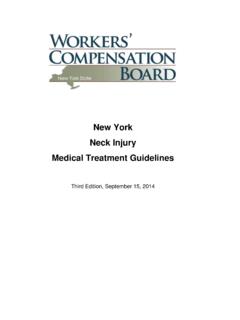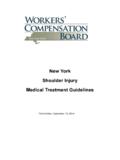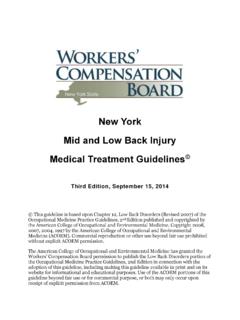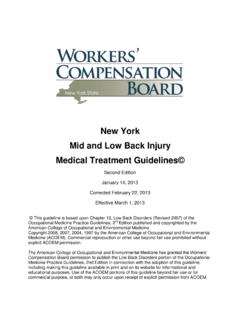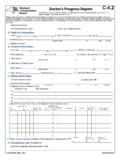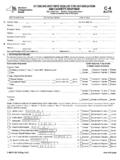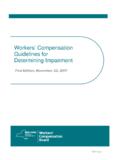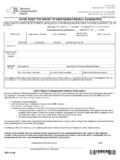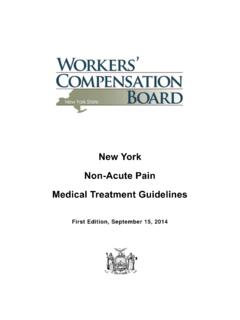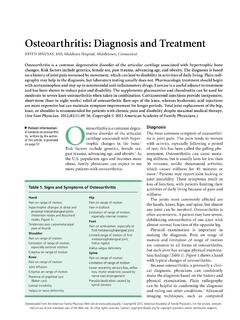Transcription of Carpal Tunnel Syndrome
1 New York Carpal Tunnel Syndrome Medical Treatment Guidelines Second Edition, September 15, 2014 New York State Workers Compensation Board New York Carpal Tunnel Syndrome Medical Treatment Guidelines Second Edition, September 15, 2014 i TABLE OF CONTENTS GENERAL GUIDELINE PRINCIPLES .. 1 INTRODUCTION .. 8 HISTORY TAKING AND PHYSICAL EXAMINATION .. 8 New York State Workers Compensation Board New York Carpal Tunnel Syndrome Medical Treatment Guidelines Second Edition, September 15, 2014 ii MAKING THE diagnosis .. 12 NON-OPERATIVE TREATMENT PROCEDURES .. 17 SURGERY .. 26 New York State Workers Compensation Board New York Carpal Tunnel Syndrome Medical Treatment Guidelines Second Edition, September 15, 2014 iii APPENDIX A: diagnosis Reference Tables .. 31 37 REFERENCES .. 38 New York State Workers Compensation Board New York Carpal Tunnel Syndrome Medical Treatment Guidelines Second Edition, September 15, 2014 1 GENERAL GUIDELINE PRINCIPLES The principles summarized in this section are key to the intended application of the New York State Medical Treatment Guidelines (MTG).
2 Medical Care MEDICAL CARE Medical care and treatment required as a result of a work-related injury should be focused on restoring functional ability required to meet the patient s daily and work activities and return to work, while striving to restore the patient s health to its pre-injury status in so far as is feasible. RENDERING OF MEDICAL SERVICES Any medical provider rendering services to a workers compensation patient must utilize the Treatment Guidelines as provided for with respect to all work-related injuries and/or illnesses. POSITIVE PATIENT RESPONSE Positive results are defined primarily as functional gains which can be objectively measured. Objective functional gains include, but are not limited to, positional tolerances, range of motion, strength, endurance, activities of daily living (ADL), cognition, psychological behavior, and efficiency/velocity measures which can be quantified.
3 Subjective reports of pain and function should be considered and given relative weight when the pain has anatomic and physiologic correlation. RE-EVALUATE TREATMENT If a given treatment or modality is not producing positive results, the provider should either modify or discontinue the treatment regime. The provider should evaluate the efficacy of the treatment or modality 2 to 3 weeks after the initial visit and 3 to 4 weeks thereafter. Recognizing that treatment failure is at times attributable to an incorrect diagnosis should prompt the clinician to reconsider the diagnosis in the event of an unexpected poor response to an otherwise rational intervention. New York State Workers Compensation Board New York Carpal Tunnel Syndrome Medical Treatment Guidelines Second Edition, September 15, 2014 2 Education EDUCATION Education of the patient and family, as well as the employer, insurer, policy makers and the community should be a primary emphasis in the treatment of work-related injury or illness.
4 Practitioners should develop and implement effective educational strategies and skills. An education-based paradigm should always start with communication providing reassuring information to the patient. No treatment plan is complete without addressing issues of individual and/or group patient education as a means of facilitating self-management of symptoms and prevention of future injury. Time Frames DIAGNOSTIC TIME FRAMES Diagnostic time frames for conducting diagnostic testing commence on the date of injury. Clinical judgment may substantiate the need to accelerate or decelerate the time frames discussed in this document. TREATMENT TIME FRAMES Treatment time frames for specific interventions commence once treatments have been initiated, not on the date of injury. Obviously, duration may be impacted by disease process and severity, patient compliance, as well as availability of services.
5 Clinical judgment may substantiate the need to accelerate or decelerate the time frames discussed in this document. DELAYED RECOVERY For those patients who are failing to make expected progress 6-12 weeks after an injury, reexamination in order to confirm the accuracy of the diagnosis and re-evaluation of the treatment program should be performed. Assessment for potential barriers to recovery (yellow flags/psychological issues) should be ongoing throughout the care of the patient. However, at 6-12 weeks, alternate treatment programs, including formal psychological or psychosocial evaluation, should be considered. Referrals to mental health providers ( , psychology/psychiatry) for the evaluation and management of delayed recovery do not indicate or require the establishment of a psychiatric or psychological condition.
6 The evaluation and management of delayed recovery does not require the establishment of a psychiatric or psychological claim. New York State Workers Compensation Board New York Carpal Tunnel Syndrome Medical Treatment Guidelines Second Edition, September 15, 2014 3 Treatment Approaches ACTIVE INTERVENTIONS Active interventions emphasizing patient responsibility, such as therapeutic exercise and/or functional treatment, are generally emphasized over passive modalities, especially as treatment progresses. Generally, passive and palliative interventions are viewed as a means to facilitate progress in an active rehabilitation program with concomitant attainment of objective functional gains. ACTIVE THERAPEUTIC EXERCISE PROGRAM Active therapeutic exercise program goals should incorporate patient strength, endurance, flexibility, range of motion, sensory integration, coordination, and education as clinically indicated.
7 This includes functional application in vocational or community settings. DIAGNOSTIC IMAGING AND TESTING PROCEDURES Clinical information obtained by history taking and physical examination should be the basis for selection and interpretation of imaging procedure results. All diagnostic procedures have variable specificity and sensitivity for various diagnoses. When a diagnostic procedure, in conjunction with clinical information, provides sufficient information to establish an accurate diagnosis , a second diagnostic procedure will be redundant if it is performed only for diagnostic purposes. At the same time, a subsequent diagnostic procedure (that may be a repeat of the same procedure, when the rehabilitation physician, radiologist or surgeon documents the study was of inadequate quality to make a diagnosis ) can be a complementary diagnostic procedure if the first or preceding procedures, in conjunction with clinical information, cannot provide an accurate diagnosis , and is permissible under the MTG.
8 It is recognized that repeat imaging studies and other tests may be warranted by the clinical course and to follow the progress of treatment in some cases. It may be of value to repeat diagnostic procedures ( imaging studies) during the course of care to reassess or stage the pathology when there is progression of symptoms or findings, prior to surgical interventions and therapeutic injections when warranted, and post-operatively to follow the healing process. Regarding CT examinations, it must be recognized that repeat procedures result in an increase in cumulative radiation dose and associated risks. New York State Workers Compensation Board New York Carpal Tunnel Syndrome Medical Treatment Guidelines Second Edition, September 15, 2014 4 SURGICAL INTERVENTIONS Contemplation of surgery should be within the context of expected functional outcome.
9 The concept of "cure" with respect to surgical treatment by itself is generally a misnomer. All operative interventions must be based upon positive correlation of clinical findings, clinical course and imaging and other diagnostic tests. A comprehensive assimilation of these factors must lead to a specific diagnosis with positive identification of pathologic condition(s). For surgery to be performed to treat pain, there must be clear correlation between the pain symptoms and objective evidence of its cause. In all cases, shared decision making with the patient is advised. The patient should be given the opportunity to understand the pros and cons of surgery, potential for rehabilitation as an alternative where applicable, and evidence-based outcomes, and specific surgical experience. PRE-AUTHORIZATION All diagnostic imaging, testing procedures, non-surgical and surgical therapeutic procedures within the criteria of the Medical Treatment Guidelines and based on a correct application of the Medical Treatment Guidelines are considered authorized, with the exception of the following procedures: Lumbar Fusion, Artificial Disc Replacements, Vertebroplasty, Kyphoplasty, Electrical Bone Growth Stimulators, Spinal Cord Stimulators, Intrathecal Drug Delivery (Pain Pumps), Osteochondral Autograft, Autologous Chondrocyte Implantation, Meniscal Allograft Transplantation and Knee Arthroplasty (Total or Partial Knee Joint Replacement).
10 These are not included on the list of pre-authorized procedures. Providers who want to perform one of these procedures must request pre-authorization from the carrier before performing the procedure. Second or subsequent procedures (the repeat performance of a surgical procedure due to failure of, or incomplete success from the same surgical procedure performed earlier, if the Medical Treatment Guidelines do not specifically address multiple procedures) also require pre-authorization. PERSONALITY/PSYCHOLOGICAL/PSYCHOSOCIAL EVALUATIONS In select patients, diagnostic testing procedures may be useful when there is a discrepancy between diagnosis , signs, symptoms, clinical concerns or functional recovery. Psychological testing should provide differentiation between pre-existing depression versus injury-caused depression, as well as post-traumatic stress disorder, and other psychosocial issues that may include work or non-work-related issues when such conditions are identified in the patient.
